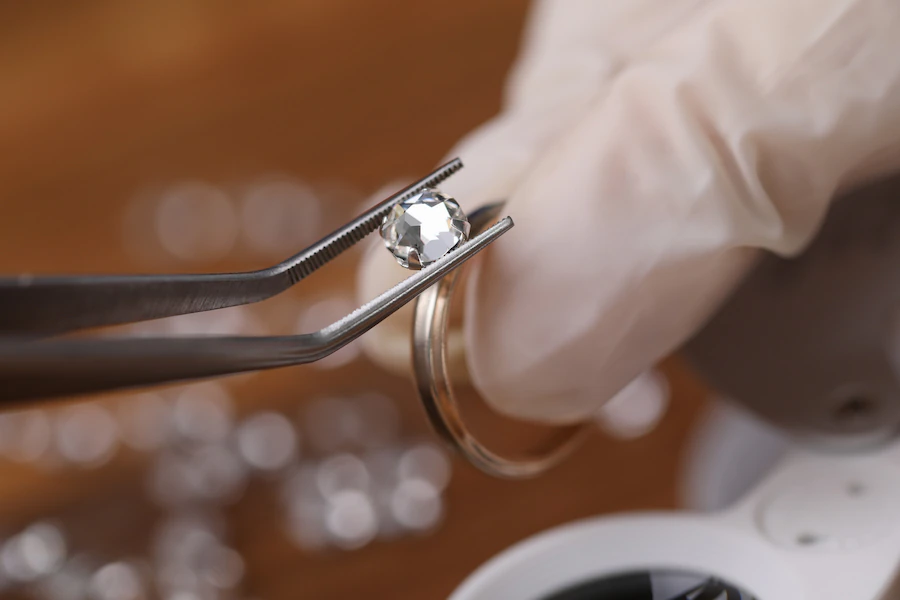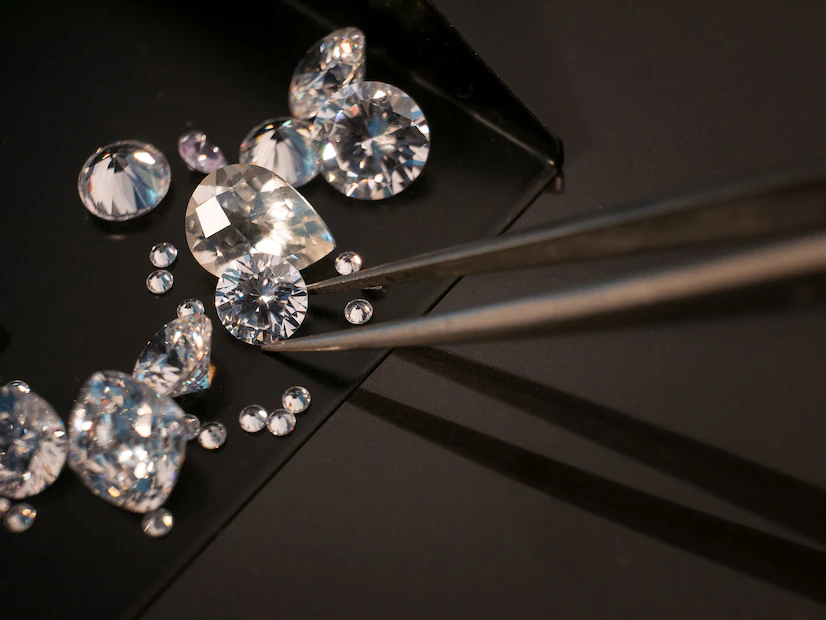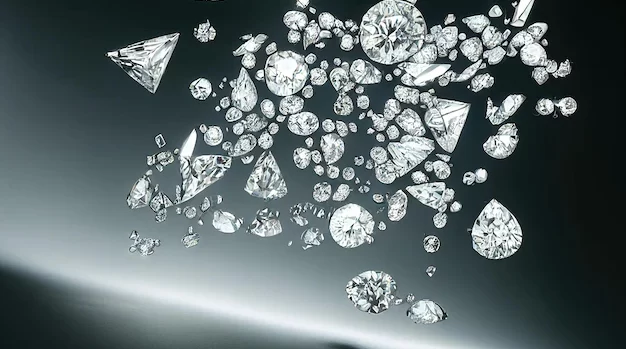Why Lab-Grown Diamonds Are Better For The Environment
According to a study by Unilever, 33% of consumers prefer environmentally friendly brands, particularly those in the diamond industry.
The mining of diamonds without proper regulation has harmed the environment by causing carbon emissions, land erosion, deforestation, and pollution.
Jewelry made quickly also harms the environment. Due to their minimal impact, decreased waste, and controlled waste disposal, lab-grown diamonds encourage sustainable living in the industry.
An illustration of human carelessness and our dysfunctional relationship with the environment is the COVID-19 pandemic.
In an effort to position itself as a more environmentally friendly business, Pandora is eschewing mined diamonds in favor of lab-grown substitutes.
According to experts, the truth is more nuanced, despite the fact that lab-grown diamonds are increasingly promoted to young, environmentally conscious consumers as the sustainable option.
Lab-Grown Diamonds And The Environment

Lab-grown diamonds, also known as synthetic diamonds, are gaining popularity because of their eco-friendliness compared to mined diamonds.
These diamonds are produced in controlled lab settings using advanced technology, which reduces deforestation, habitat destruction, and water pollution.
This innovative approach, taken up by companies like Labrilliante, offers a sustainable and ethical alternative for those who desire the beauty and brilliance of diamonds without compromising on environmental values.
In other words, lab-grown diamonds are a more sustainable and ethical option for the environmentally conscious—
1. Enhances Sustainability
Lab-created diamonds are produced in a laboratory using technological processes that do not directly or indirectly impact the environment.
On the other hand, diamond mining causes irreversible damage to the Earth. To mine a 1.0-carat diamond requires approximately 1750 tons of earth.
Although some companies follow environmental rehabilitation guidelines, restoring the pit to its original condition is still technically impossible.
Diamond mining also disrupts the land by accumulating excess waste, which needs to be managed and rehabilitated.
Unregulated and illegal diamond mines often fail to handle this waste, leading to land destruction and ecological imbalance. Marine and coastal mining also results in large-scale excavations and modification of coastal areas.
On the other hand, eco-friendly diamonds are grown in safe environments within laboratories that follow environmental regulations, avoiding such damage to the Earth.
2. Minimizes Pollution
Lab-grown or eco-friendly diamonds are produced in safe laboratories using minimal energy and generating minimal waste or emissions.
On the other hand, mined diamonds release chemicals into the air and water, contributing to pollution and environmental degradation.
Mining diamonds involves using electricity and hydrocarbon energy, which causes carbon emissions, greenhouse gases, and harmful chemical substances, leading to smog, climate change, and other environmental challenges.
According to a comparative analysis by Frost & Sullivan, mined diamonds produce 57000 grams of harmful carbon emissions per carat, while grown diamonds emit just 0.028 grams per carat.
Mined diamonds have a significant environmental impact, contributing to smog and climate change.
3. Lower Energy-Consumption
Small seeds are inserted into carbon-rich chambers to produce lab-grown diamonds, then heated and compressed while being built up atom by atom.
This controlled, eco-friendly process adheres to stringent production guidelines. Eco-friendly lab-grown diamonds only need a small amount of electricity primarily derived from renewable sources.
In contrast to mined diamonds, lab-grown diamonds are produced without chemicals, water, or hazardous materials.
They are better for the environment than mined diamonds, which consume a lot of electricity and hydrocarbons and produce carbon emissions and greenhouse gases.
Additionally, mining uses a lot of water, chemicals, and dangerous materials.
4. Zero Disruption In The Natural Habitats
Eco-friendly diamonds produced in a laboratory do not harm plants or animals in any way.
Unlike mining, where the area’s natural habitat, including the flora and fauna, are directly impacted, lab-grown diamonds pose no threat to the biodiversity, ecology, or natural habitat.
Mining can lead to displacement of animals and disturbance of the local plant and animal life. However, eco-friendly diamonds produced in secure lab settings do not harm the environment.
The Kimberley Process
A global trade framework called the Kimberley Process (KP) was established in 2003 to end the trade in conflict diamonds by enhancing transparency and oversight in the diamond supply chain.
It forbids non-participant trade and mandates domestic certification programs for security and transparency.
The KP includes 59 participants from 85 nations, including the US and EU, as well as observers from business and civil society.
To export raw diamonds, it is necessary to acquire a Kimberley Process Certificate. This document verifies that the diamonds were not utilized to assist in rebel activities.
Furthermore, the diamonds must be transported in containers that cannot be tampered with.
However, ensuring origins free of conflict is challenging due to the complicated supply chain. Most Canadian diamonds are more transparent due to Canada’s strict mining regulations.
How Are Lab-Grown Diamonds Incorporated In The Fashion Industry?

Lab-grown diamonds have been gaining popularity in the jewelry market, with engagement rings, wedding bands, earrings, necklaces, and bracelets made from them.
This trend is driven by consumers’ increasing interest in sustainable and ethically sourced diamonds. Synthetic diamonds grown in the lab are used in grinding, drilling, and polishing procedures.
Moreover, small diamonds of gemstone quality are used in various industries due to their high thermal conductivity.
The sales of lab-grown diamond jewelry have shown significant growth worldwide, reaching almost $12 billion in 2022, a YoY increase of 38%.
In 2023, the industry sold $14.6 billion worth of lab-grown diamonds globally. Many celebrities have been adding ethical or lab-grown diamond jewelry to their collection.
The Disadvantageous Side Of Lab-Grown Diamonds
Lab-grown diamonds share a similar chemical composition with their mined counterparts but come at a more affordable price point.
However, they lack natural stones’ rarity, individuality, and sentimental value.
Starting a lab-grown diamond manufacturing business may require a significant investment, but with the right business plan and expert guidance, it can be a profitable and sustainable endeavor.
These diamonds come in varying qualities and values, with premium lab-grown diamonds being more challenging to produce, trading at higher wholesale prices, and competing with some of the world’s highest-quality natural diamonds.
Beyond The Fashion Industry
India’s Union Budget has recently cut the customs duty for seeds that produce lab-created diamonds to 0% from the earlier 5%.
This move aims to promote the production of lab-grown diamonds in the country. Unlike natural diamonds, lab-created diamonds have the same chemical composition, physical properties, and optical characteristics as mined diamonds.
However, natural diamonds are often linked to conflict and unethical practices, including using slave labor.
On the other hand, lab-grown diamonds offer a transparent and traceable history, allowing consumers to trace their origin and purchase them for jewelry.
While this move is a positive step for the diamond industry, it may not necessarily benefit the local jewelry market.
Read Also:








